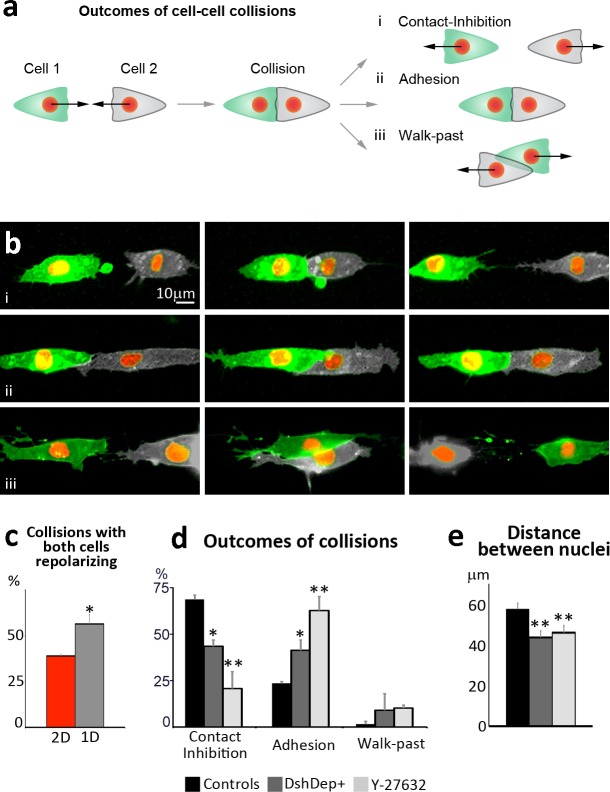There was an error published in Biol. Open 2, 901-906.
In Fig. 4D, the y-axis scale was incorrect; the correct Fig. 4 is shown below. There are no changes to the figure legend, which is accurate. This error does not affect the conclusions of the paper.
Fig. 4.
1D-substrates increase the probability of successful collision and provide a simpler readout of CIL. (a) Diagram showing the possible outcomes of cell–cell collisions on fibronectin lines. (b) Examples showing the different outcomes depicted in panel A. When CIL occurs it leads to complete repolarization of the direction of migration with cells moving away from each other (ai,bi). Alternatively, cells can fail to dissociate after contact and adhere to each other (aii,bii). Finally, cells may not react to their physical contact and walk past each other following their original path of migration (aiii,biii). (c) Percentage of cell–cell collisions in which both colliding cells repolarize upon contact in 2D or 1D cultures (*P<0.05). (d) Percentages of NC cells displaying CIL, adhesion or Walk-Past behavior in control conditions or upon Wnt/PCP inhibition (DEP+) or Rho Kinase inhibition (Y-27632). *P<0.05; **P<0.01. (e) Distance between nuclei of colliding cells 30 minutes after initial contact in control conditions or upon DEP+ or Y-27632 treatment (**P<0.01). Scale bar: 10 μm (b).
The authors apologise to the readers for any confusion that this error might have caused.



